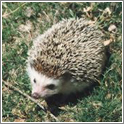Hypometabolic stasis

Endothermic animals like hedgehogs can enter a physiological state called torpor to survive the winter. Putting astronauts in that state would reduce energy consumption by the spacecraft and hence might facilitate long duration space travels.
Motivation
Endothermics like, e.g., humans and other mammals maintain a constant body temperature independent of the ambient conditions. While this allows for a increased mobility and hence provided an evolutionary advantage, it also means a constant and rather high metabolic activity. Some mammals have evolved a state called torpor which allows for a down regulation of the animal's metabolism. By this means, the animals lower their heart rate and body temperature and can save a considerable amount of energy. On Earth this behavior facilitates survival during winter. In spacecraft putting astronauts in torpor would lower the consumption of energy and oxygen drastically and hence allow for extended travels. Our study examines the state of the research on torpor and the possibilities to externally induce torpor in animals and humans.